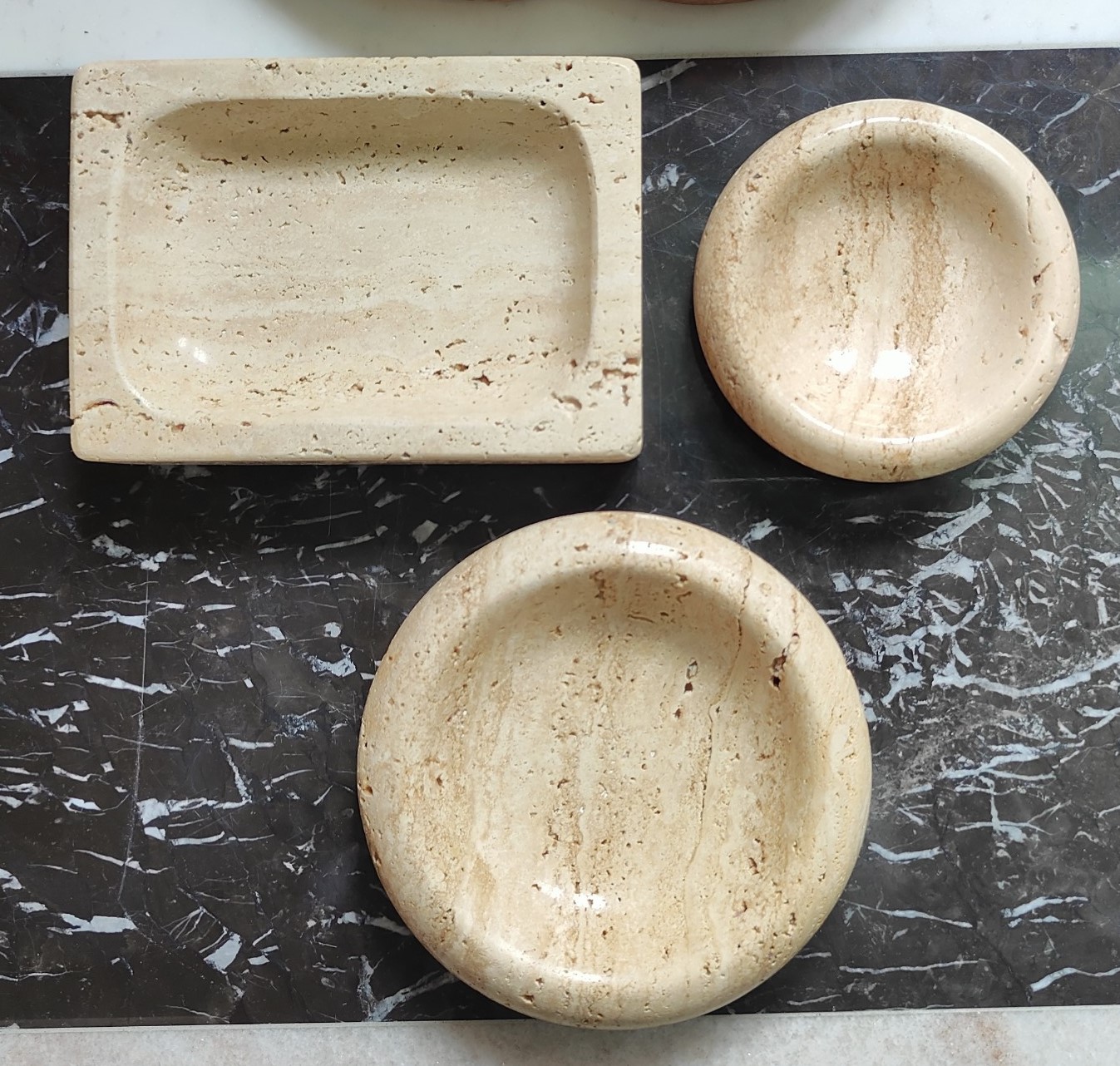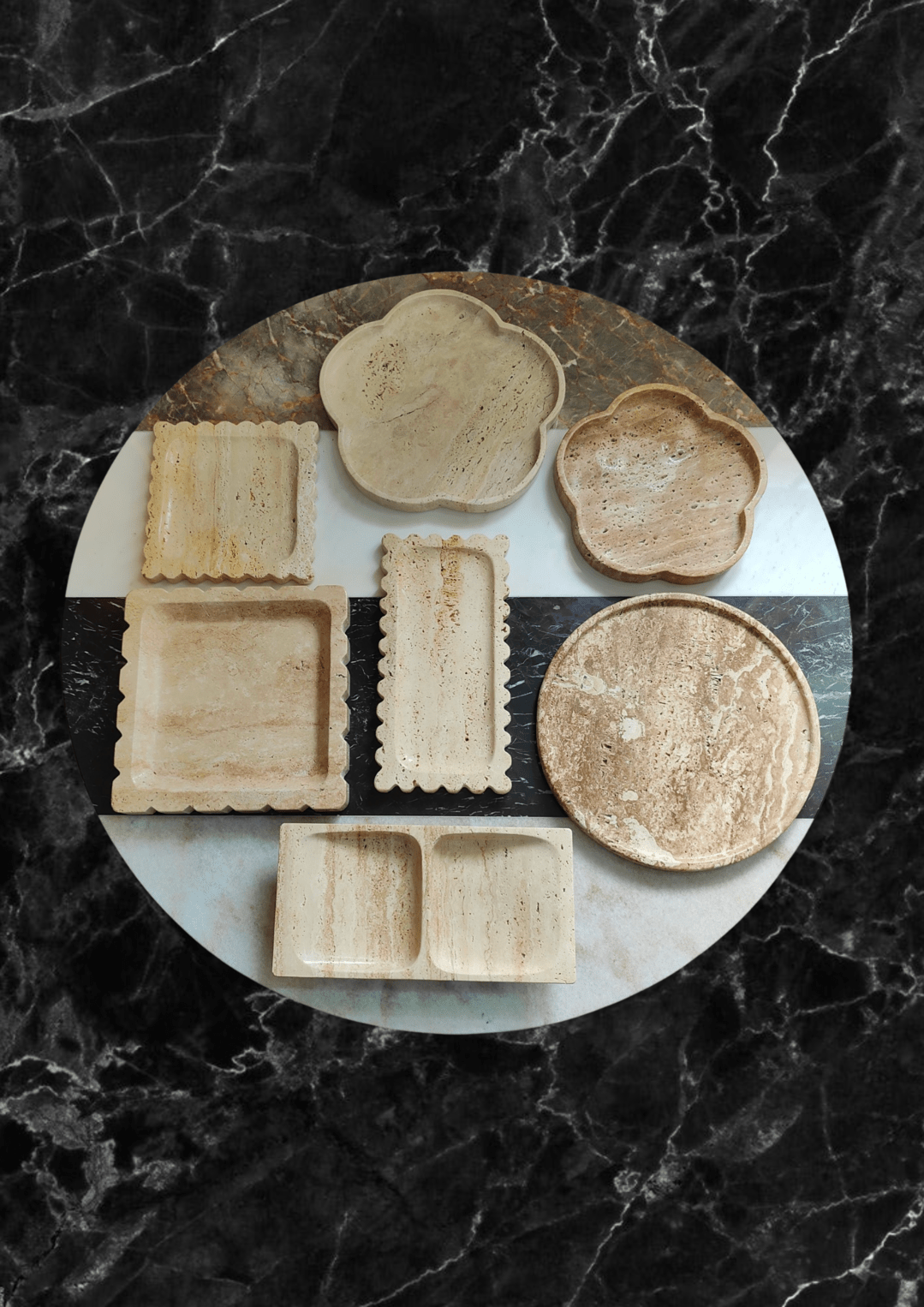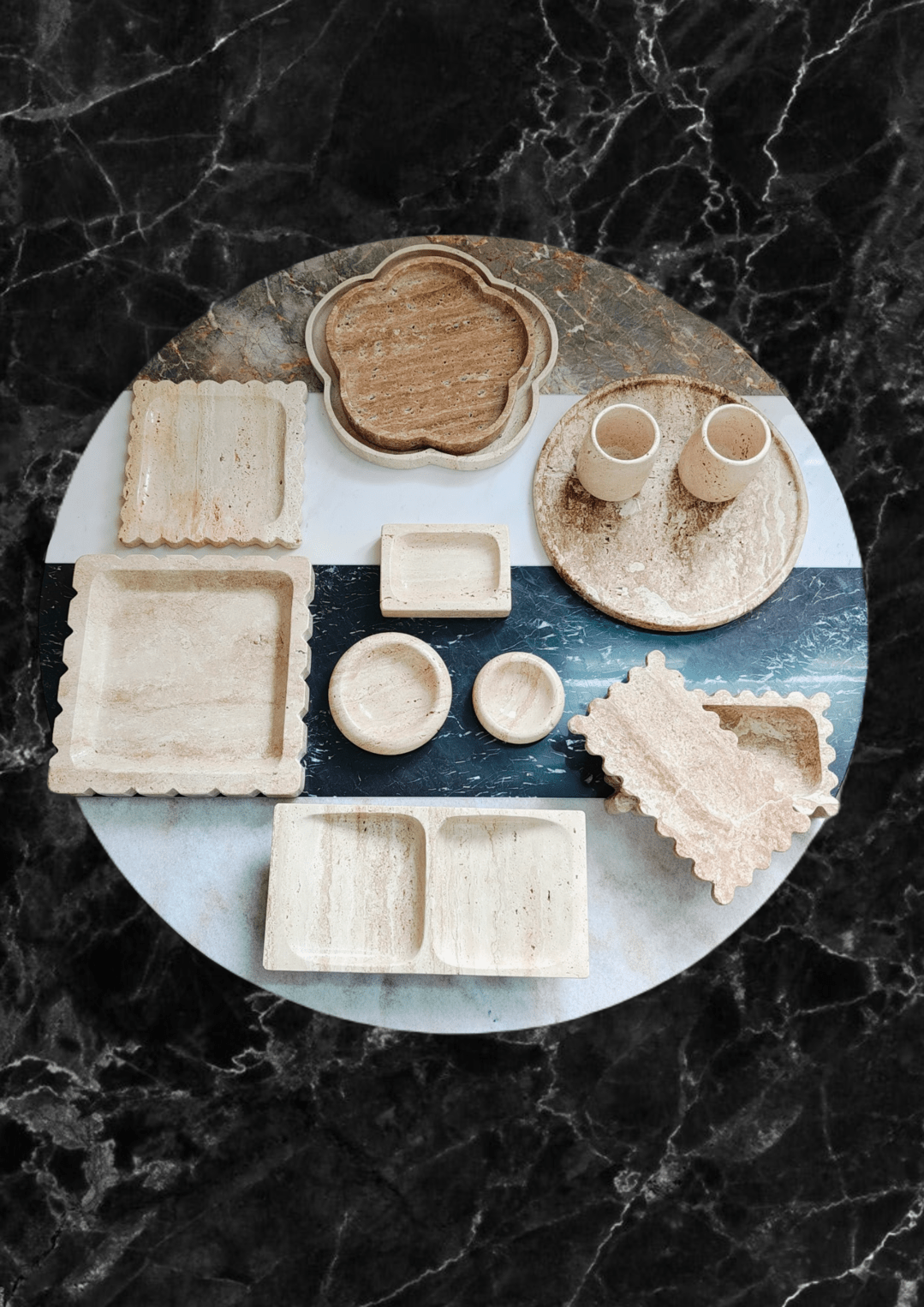TRAVERTINE COLLECTION - PROS AND CONS
What is travertine?
Since ancient times, one of the most often utilized stone kinds in construction has been travertine, a variation of limestone created from calcium carbonate deposits in or near hot springs or limestone caves.
In addition to being used for flooring, worktops, backsplashes, shower and tub surrounds, fireplace surrounds, outdoor pavers for patios and walks, and swimming pool surrounds, travertine is now highly valued as a beautiful and long-lasting material for residential applications. Travertine, in contrast to granite and marble, has a naturally worn appearance that complements both formal and casual décor styles.
The color spectrum of Travertine includes neutrals with warm to mild tones.
Ivory, gold, beige, brown, red, and peach are just a few of the warm, soft neutral colors available for travertine pavers, slabs, and tiles. The color usually flows and swirls throughout the stone, producing distinctive patterns that add to the classic beauty of travertine.
What you won't see in travertine are the strikingly contrasted black veins on a lighter backdrop that characterize marble or the brightly colored spots and freckles that are typical of granite. Compared to those other common stones, travertine often has tone-on-tone colors and much more subdued patterns.
In addition, the surface of travertine is typically somewhat pitted with tiny holes and indentations from carbon dioxide bubbling up and out of the stone during its formation near natural hot springs, setting it apart from granite and marble. Although travertine's perforations provide it a rustic character, when used as worktops or floors, they tend to collect dust and dirt.

Advantages of Travertine Product
Timeless Appearance
The weathered, antique, or rustic aspect of travertine never goes out of style and always looks stunning. If you replace one tile, the new one won't be any different from the others. Additionally, these tiles complement any type of house design.
Affordable Cost
Products made of natural stone are often among the least expensive ones available. Travertine is an inexpensive luxury, nonetheless, because it still has the same stunning appearance as other stone products. The source, fill level, and finish of the travertine product will determine its price.
Excellent Durability
Stones made of travertine are extremely durable and long-lasting. Travertine will continue to appear beautiful with proper cleaning and maintenance.
It will endure longer if the right finish is installed for that particular location. Moving heavy things over travertine tile flooring requires attention since the marble is delicate and prone to scratches.
Versatile
Travertine may be used for a lot of things, like as backsplashes, fireplace surrounds, outdoor walks, patios, showers, bathtub surrounds, and flooring in bathrooms and kitchens.

Disadvantages of Travertine Products
Requires Routine Maintenance
Compared to other materials like granite or porcelain tile, travertine may require more upkeep since it can be scratched, etched, or discolored. Clean up spills as soon as they occur to avoid discoloration.
It Needs Sealing (usually)
More often than polished finishes, honing, brushing, and tumbled finishes need to be resealed. While polished travertine frequently doesn't require sealing, the pores are closed when the surface is polished.
Highly Susceptible to Acids
Calcium carbonate, the ingredient in travertine, reacts with food, drink, and caustic chemicals to produce dull patches on the surface. When travertine is used as tile flooring or in a shower, etching is not a big problem, but it is not a suitable option for a kitchen countertop.


0 Bình luận